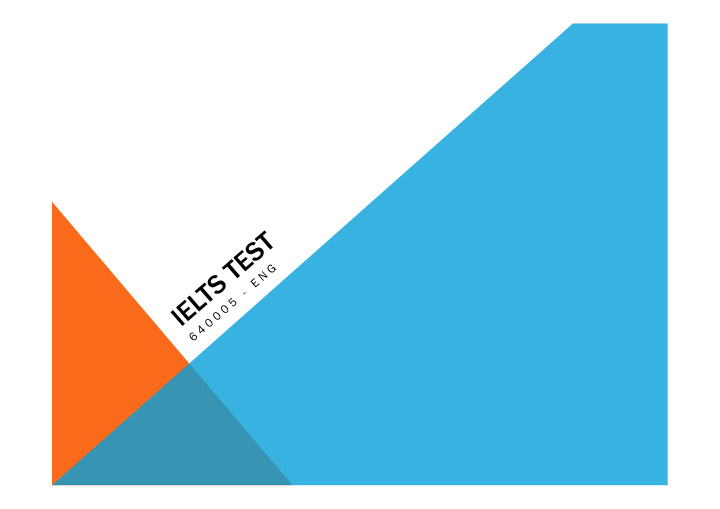



Listeni ning ng 3 30 mi minu nutes Test takers listen to 4 recorded texts, monologues and conversations by a range of native speakers, and write their answers to a series of questions. Reading ng 6 60 mi minu nutes The Academic version includes 3 long texts which range from the descriptive and factual to the discursive and analytical. à The texts are authentic and are taken from books, journals, magazines and newspapers, all of which have been selected for a non-specialist audience. The General Training version requires test takers to read extracts from newspapers, advertisements, instruction manuals and books. These are materials test takers could encounter on a daily basis in an English speaking country.
Writing ng 6 60 mi minu nutes The Academic version includes two tasks. Topics are of general interest to, suitable for and easily understood by test takers entering undergraduate or postgraduate studies or seeking professional registration. Task 1 Test takers are presented with a graph, table, chart or diagram and are asked to describe, summarize or explain the information in their own words. They may be asked to describe and explain data, describe the stages of a process, how something works or describe an object or event. Task 2 Test takers are asked to write an essay in response to a point of view, argument or problem. Responses to both tasks must be written in a formal style.
Writing ng 6 60 mi minu nutes The General Training version also includes two tasks, and is based on topics of general interest. Task 1 Test takers are presented with a situation and are asked to write a letter requesting information or explaining the situation. The letter may be personal, semi-formal or formal in style. Task 2 Test takers are asked to write an essay in response to a point of view, argument or problem. The essay can be slightly more personal in style than the Academic Writing Task 2 essay.
Speaking 11–14 minutes The Speaking component assesses the test taker’s use of spoken English, and takes between 11 and 14 minutes to complete. Every test is digitally recorded and consists of three parts: Part 1 Test takers answer general questions about themselves and a range of familiar topics, such as their home, family, work, studies and interests. This part lasts between four and five minutes. Part 2 Test takers are given a booklet which asks them to talk about a particular topic. They have one minute to prepare before speaking for up to two minutes. The examiner may ask one or two questions on the same topic to finish this part of the test. Part 3 Test takers are asked further questions which are connected to the topic in Part 2. These questions give the candidate an opportunity to discuss more abstract issues and ideas. This part lasts between four and five minutes.
The format of the Speaking test is common across both the Academic and General Training modules. It is structured in such a way that does not allow test takers to rehearse set responses beforehand.
There is no pass or fail in IELTS. Rather, all test results are reported on a clear 9-band scale (from 1, the lowest, to 9, the highest), as shown in the table opposite. Test takers receive an overall band score as well as individual scores for each test component (Listening, Reading, Writing and Speaking). Each of the component scores is equally weighted. The overall band score is calculated by taking the mean of the total of the four individual component scores. Overall band scores are reported to the nearest whole or half band.
IELTS recognises both British and American English in terms of spelling, grammar and choice of words. It also incorporates a mix of native speaker accents from Australia, Canada, New Zealand, the UK and US in the Listening component.
Recommend
More recommend